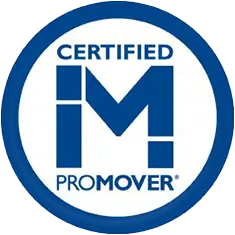The moving industry is undergoing a significant transformation as companies adapt to the challenges posed by a tight labor market. With a growing demand for services and a shrinking pool of available workers, many organizations are turning to innovative solutions. Virtual teams and training programs are at the forefront of this evolution, helping moving companies not only to survive but thrive in a competitive landscape.
The Labor Crunch: Understanding the Challenges
In recent years, the moving industry has faced a labor crunch that has made it increasingly difficult to find qualified workers. Factors such as an aging workforce, increased demand for moving services, and the impact of the COVID-19 pandemic have all contributed to this challenge.
Changing Workforce Dynamics
The demographic shifts in the workforce have played a significant role in the labor crunch. Many experienced movers are retiring, leaving behind a gap that younger workers have been slow to fill. Additionally, the pandemic has altered perceptions of work, with many individuals seeking more flexible job options. This has led to a scarcity of labor in an industry that relies heavily on physical labor and skilled workers. Furthermore, the rise of remote work has shifted priorities for many job seekers, leading them to pursue careers that offer more stability and less physical strain. As a result, the moving industry must not only attract younger workers but also adapt to their expectations, including offering more comprehensive training programs and career advancement opportunities.
Impact of Economic Factors
Economic factors also contribute to the labor shortage. As the economy rebounds, many sectors are competing for the same pool of workers. The moving industry often struggles to offer competitive wages and benefits compared to other sectors, making it challenging to attract and retain talent. This competition has forced companies to rethink their hiring and training strategies. Additionally, the rising costs of living in many urban areas have made it even more difficult for workers in the moving industry to make ends meet, leading to higher turnover rates. Companies are now exploring innovative solutions, such as offering signing bonuses, enhanced benefits packages, and even flexible scheduling to entice potential employees. The focus has shifted to not just filling positions but creating a work environment that fosters loyalty and job satisfaction, which is essential for long-term success in this competitive landscape.
Embracing Virtual Teams
To address the labor crunch, moving companies are increasingly embracing virtual teams. This approach not only allows for greater flexibility but also expands the talent pool beyond geographical limitations. By integrating remote work into their operational strategies, these companies can tap into diverse skill sets and experiences that may have previously gone unnoticed in a traditional hiring framework.
Leveraging Technology for Recruitment
Virtual recruitment has become a game-changer for moving companies. By utilizing online platforms, companies can reach a wider audience and attract candidates who may not have considered a job in the moving industry before. Video interviews, virtual job fairs, and online assessments streamline the hiring process, making it easier to identify the right candidates quickly. Moreover, the use of artificial intelligence in screening applications can help pinpoint individuals whose skills and experiences align closely with the company’s needs, thus enhancing the efficiency of the recruitment process.
Remote Collaboration and Management
Virtual teams also facilitate remote collaboration among employees. With the right tools, team members can communicate effectively, share information, and work together on projects regardless of their physical location. This flexibility allows companies to maintain productivity even when faced with staffing shortages. Managers can oversee operations, provide support, and ensure that team members are aligned with company goals from anywhere. Additionally, adopting project management software can help track progress and deadlines, ensuring that all team members are on the same page and that projects are completed in a timely manner. Regular virtual check-ins and team-building activities can also foster a sense of community, helping to bridge the gap that physical distance can create.
Innovative Training Solutions
Training is a critical component of addressing the labor crunch. Moving companies are investing in innovative training solutions that enhance the skills of their workforce while also accommodating the needs of a diverse and dispersed team.
Online Training Platforms
Many companies are turning to online training platforms to provide employees with the necessary skills and knowledge. These platforms offer a range of courses, from safety protocols to customer service training, allowing employees to learn at their own pace. This flexibility is particularly beneficial for those who may be juggling multiple responsibilities or who prefer to learn in a non-traditional setting. Furthermore, the incorporation of gamification elements within these platforms can motivate employees by making the learning process more engaging and enjoyable. Leaderboards, badges, and interactive quizzes encourage friendly competition and foster a sense of achievement, ultimately boosting morale and retention rates.
Virtual Reality and Simulation Training
Some moving companies are even exploring the use of virtual reality (VR) and simulation training. These immersive experiences allow employees to practice their skills in a safe and controlled environment. For instance, new hires can learn how to properly load and secure items in a truck without the risk of damaging goods or injuring themselves. This hands-on approach can significantly enhance retention and application of skills in real-world scenarios. Additionally, VR training can simulate various challenging situations, such as navigating tight spaces or dealing with difficult customers, providing employees with the opportunity to develop problem-solving skills and adaptability. As technology continues to advance, the potential for incorporating augmented reality (AR) into training programs also emerges, offering real-time guidance and support during actual moving tasks, thereby further enhancing the learning experience.
Building a Strong Company Culture
As moving companies adopt virtual teams and training, fostering a strong company culture remains essential. A positive culture can help retain employees and enhance job satisfaction, which is crucial in a competitive labor market.
Encouraging Communication and Engagement
With remote work becoming more common, companies must prioritize communication and engagement among team members. Regular check-ins, virtual team-building activities, and open lines of communication can help create a sense of belonging among employees. When workers feel connected to their colleagues and the company, they are more likely to stay committed and engaged.
Recognition and Rewards
Recognizing and rewarding employee contributions is another vital aspect of building a strong culture. Virtual recognition programs, such as employee of the month awards or shout-outs during team meetings, can boost morale and motivate workers. By celebrating achievements, companies can foster a positive environment that encourages employees to strive for excellence.
Future Trends in the Moving Industry
The labor crunch is likely to persist, but moving companies are finding ways to adapt and thrive. As technology continues to evolve, new trends are emerging that will shape the future of the industry.
Increased Use of Automation
Automation is set to play a larger role in the moving industry. From automated scheduling systems to AI-driven customer service solutions, companies are leveraging technology to streamline operations. This not only enhances efficiency but also allows human workers to focus on more complex tasks that require a personal touch.
Focus on Employee Well-Being
As the industry evolves, there is a growing recognition of the importance of employee well-being. Moving companies are beginning to implement wellness programs that address physical and mental health. By prioritizing employee well-being, companies can reduce turnover rates and create a more resilient workforce.
Conclusion: A New Era for Moving Companies
The labor crunch presents significant challenges for moving companies, but it also opens the door to innovative solutions. By embracing virtual teams and investing in training, companies can overcome staffing shortages and build a skilled workforce. As technology continues to advance, the moving industry is poised for a transformation that will not only enhance operational efficiency but also improve employee satisfaction.
As moving companies navigate this new landscape, the focus will remain on adaptability, resilience, and the continuous pursuit of excellence. The future of the industry depends on the ability to attract and retain talent while fostering a culture that values innovation and collaboration. With the right strategies in place, moving companies can not only solve the labor crunch but also thrive in an ever-changing environment.
















